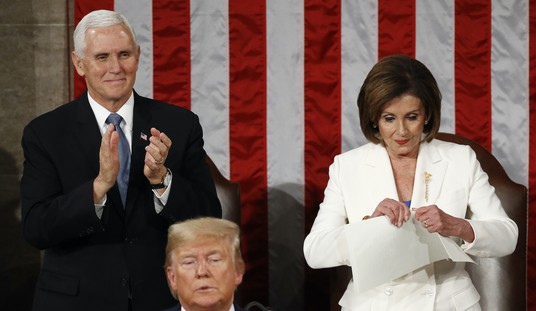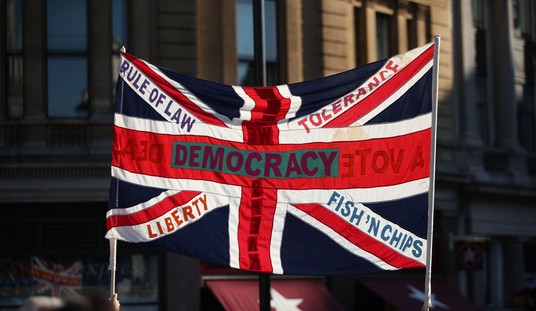Midshipman First Class Chase Standage was accused of two conduct charges for posting Twitter tweets from an account that did not associate him with the military and that were arbitrarily deemed to be “conduct unbecoming a midshipman,” an offense under Article 133 of the Uniform Code of Military Justice. Rather than conducting a court-martial under UCMJ, US Naval Academy leadership chose to adjudicate his case via internal administrative processes that resulted in USNA’s pending recommendation to the Assistant Secretary of the Navy for Manpower and Reserve Affairs [ASN(M&RA)] to separate him from the Navy and require him to reimburse USNA for the costs-to-date of his education.
MIDN Standage promptly filed a lawsuit and a motion for a preliminary injunction in a Maryland district court, and a temporary injunction was granted on 1 October. The basis for his lawsuit was violation of his First Amendment rights, including viewpoint discrimination, and his right to due process under the Fifth Amendment. The government subsequently filed an opposition and motion to dismiss the lawsuit, Standage’s lawyer filed a reply and opposition to the government’s motion to dismiss, and a hearing was conducted in the US district court last Friday to review the motions.
The facts and chronology of the case were discussed in detail here and here. The following are key points raised during the hearing, as well as several of the important interchanges between the judge and the government lawyers. The bottom line: U.S. District Judge Ellen Hollander did not make a ruling on the various motions on Friday but rather took the motions for further review until some time after 12 December due to a full slate of her prior obligations and a need to further deliberate on all factors associated with the case. That said, she forced the government’s lawyers into a rope-a-dope defense throughout the hearing with a number of blistering questions that they were unable to adequately answer.
At the District Court. The following were the key participants in Friday’s hearing:
- The Honorable Ellen Hollander, Judge of the United States District Court for the District of Maryland
- Kelly Marzullo, Assistant United States Attorney, Baltimore, Maryland Area, representing the government (the plaintiffs in MIDN Standage’s lawsuit are the Secretary of the Navy and Superintendent of USNA)
- LTCOL Sean Patton, USMC, a JAG Corps officer and co-counsel detailed from the Office of the Navy Judge Advocate General (OJAG) to assist the government team
- Jeff McFadden, MIDN Standage’s lawyer
Key Points. The government defense team was truly on defense throughout the hearing, thanks to some very pointed statements and questions from Judge Hollander. Here are some of the points she made:
- The “draconian sanction of dismissal” seemed unwarranted and had real potential for chilling speech at the Naval Academy
- The sanction on a college senior was like “shooting a fly with an AK-47”
- The Superintendent’s application of discretion may have been “arbitrary and capricious”
- It may be that MIDN Standage is being “scapegoated”
- It appears that the USNA administration’s actions may have been based on political correctness
- MIDN Standage was charged with a crime absent due process protections
- A colorable viewpoint discrimination claim is clearly in issue
- This is a troubling case of the type that “keeps judges up at night”
- The JAGMAN investigation that preceded the administrative adjudication process included inappropriate opinionated and interpretations not based on evidence or fact
- MIDN Standage’s tweets in question were made from an account not representing a midshipman in an official capacity
- The naval standards of conduct unbecoming for tweets involving political commentary were never clearly articulated by the government and may be nothing more than the political opinions of the Deputy Commandant and the Chief of Staff
- There seems to be little to no evidence of record on which the Defendants based their decisions other than the tweets themselves
Key Interchanges. There were several important interchanges between the judge and the government lawyers that transpired. Here are a few of them.
A claim was made in the government’s motion to dismiss by the Deputy Commandant that SWAT teams who kill in execution of no-knock warrants are guilty of murder. The judge noted that this was outside the naval mission (and irrelevant).
The government lawyers argued for their motion to dismiss by highlighting specific tweets made by MIDN Standage. They claimed the tweets demonstrated his desire to drop bombs on civilians from a military aircraft, and that as an aspiring fighter pilot, he needs to be separated from the Navy because, with a lack of judgment in that stressful situation, he would have bombed the CHAZ free zone in Seattle. Lawyer McFadden responded with a quote from MIDN Standage’s amended complaint:
The photograph MIDN Standage included in one of these tweets that stated, “Law and Order from 25,000 feet” was exactly that: a picture taken through the Forward Looking Infrared (FLIR) camera of a U.S. military aircraft that was used to support police officers during civil unrest in Seattle through overhead surveillance. Similar military aircraft were used for such surveillance in Minneapolis, Portland, and other U.S. cities at the direction of the Department of Homeland Security and the Federal Bureau of Investigation.
The judge inquired of the government lawyers about what actions had been taken by USNA on some nasty tweet made by other midshipmen. No response was made, so the judge took note of some of those tweets containing the “f” and “n” words, as well as one from a midshipman second class who had retweeted out to “burn Louisville to the ground” that she brought up at least twice. She asked how the midshipman second class was disciplined (she wasn’t), and how all of those vile tweets were related to USNA core values (failure to uphold core values being a key element in the charges against MIDN Standage). Again, no adequate response was made.
The judge appeared questioned, at least twice, how MIDN Standage had violated Commandant of Midshipman Notice 5720 given that the Note states, “Military personal may generally express their personal views on public issues or political candidates via social media platforms, such as Facebook, Twitter, or personal blogs, much the same as they would be permitted to write a letter to the editor of a newspaper” , and she asked the government to explain it. AUSA Marzullo was unable to do so to the point that the judge stated that the instruction allows midshipmen to tweet “to the limit provided by UCMJ.” When she asked the government team what that limit was, LTCOL Patton replied that the limit was “conduct unbecoming a midshipman” even through the Note does not say that. The judge then asked about the standard for conduct unbecoming in tweets, and LTCOL Patton responded that the standard is up to the Superintendent’s discretion. The judge did not appear to accept the arbitrariness of that argument.
There was an interchange regarding the Chief of Staff’s finding in which he rejected MIDN Standage’s appeal with these words:
The issue with your social media comments was in the manner in which you expressed your opinions, not necessarily with the opinions themselves. You are not being punished for your beliefs, but for the fact that you failed to express them in a way that is consistent with our Navy core values.
The discussion devolved into a circular argument about the “tone” of Standage’s tweets, according to the AUSA, to which the judge asked how tone is created on Twitter. No answer was given.
The judge inquired why USNA does not simply ban Twitter tweeting by midshipmen in general. LTCOL Patton stated that all military personnel are encouraged to engage in political expression. The judge then replied that that apparently doesn’t extend to political expression when a superior does not approve, with separation from the military being the result of such expression (!).
The judge further noted that USNA has a conduct remediation program and asked why no punishment was offered to MIDN Standage other than separation from the Academy. She noted that the Superintendent had many other options which had been used on other conduct cases and asked why none of those options applied in this case. LTCOL Patton replied that it was within the Superintendent’s discretion to separate a midshipman for a conduct offense. The judge then said that no application of discretion can be without basis, and that she did herself not have such unbridled discretion, so how does the Superintendent have it? In response to the government conduct argument to separate MIDN Standage from USNA, lawyer McFadden stated that the Academy is an academic institution under the Navy, MIDN Standage a 21-year-old college senior, colleges across the country have been getting sued for making administrative disenrollment actions outside legal protections, and that this case appeared to be very similar in nature.
Summary. The government’s case for dismissal of MIDN Standage’s lawsuit rests almost solely on “unlimited discretion” and exhaustion of administrative remedies. As MIDN Standage’s attorney Jeff McFadden pointed out, the government completely failed to rebut any of the facts supporting the First Amendment claim and focused almost entirely on why the case should not be heard. The judge focused at length on the exhaustion issue and said she needed more time to analyze the issue further. The actions of the Superintendent, his Chief of Staff, the Commandant, and the Deputy Commandant throughout the adjudication process clearly did not sit well with the judge, and the government’s responses to direct questions from the judge were inadequate at best, which certainly did not help their case. It is difficult to determine what impact the flawed disciplinary procedure at USNA that resulted in a recommendation to separate MIDN Standage from the Academy will have on the judge’s ultimate decision. That no JAG Corps officer involved in the case at USNA was present at the hearing – nor the lieutenant who completed the JAGMAN investigation – speaks volumes. It could not have been lost on the judge that perhaps the government was trying to avoid answering questions on the JAGMAN investigation and the USNA conduct adjudication process that were essentially unanswerable – and which answers would likely have undermined the government’s representations regarding the exhaustion issue! Finally, the judge stated at the end of the hearing that the case was even more complicated than she had realized, and that considerable further deliberation was required before she could render a decision. Stay tuned!
The end.












Join the conversation as a VIP Member